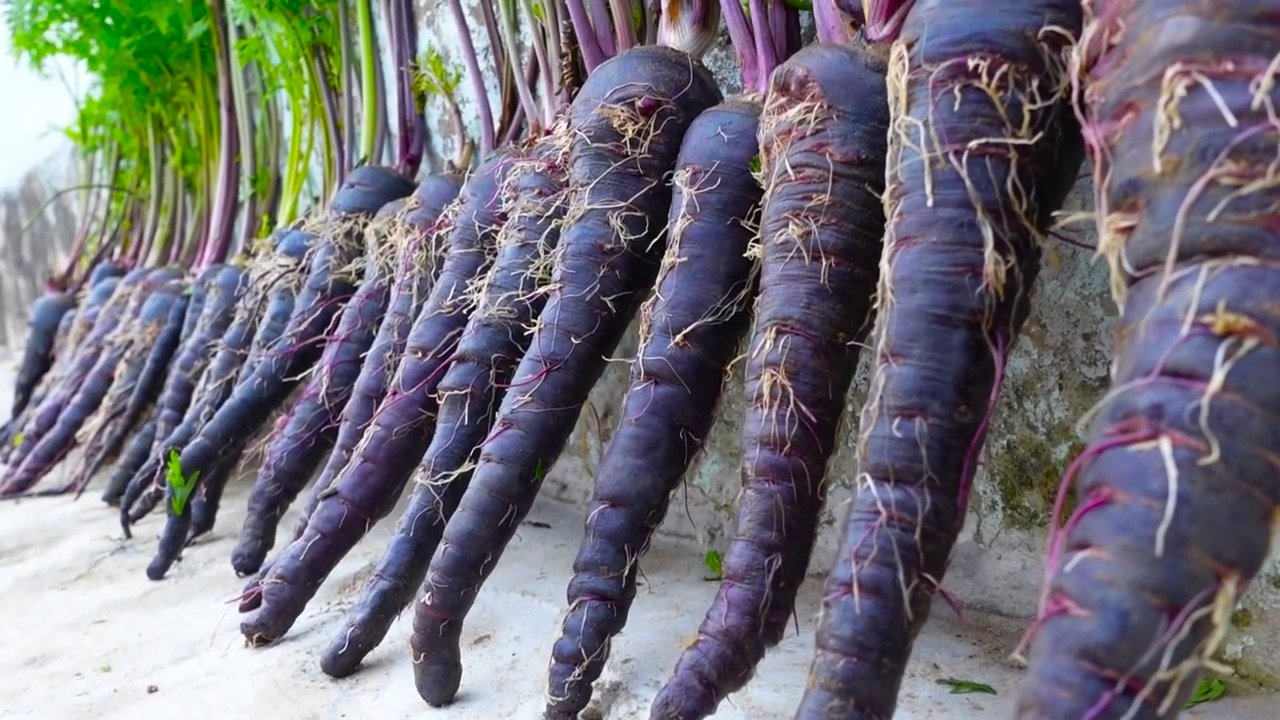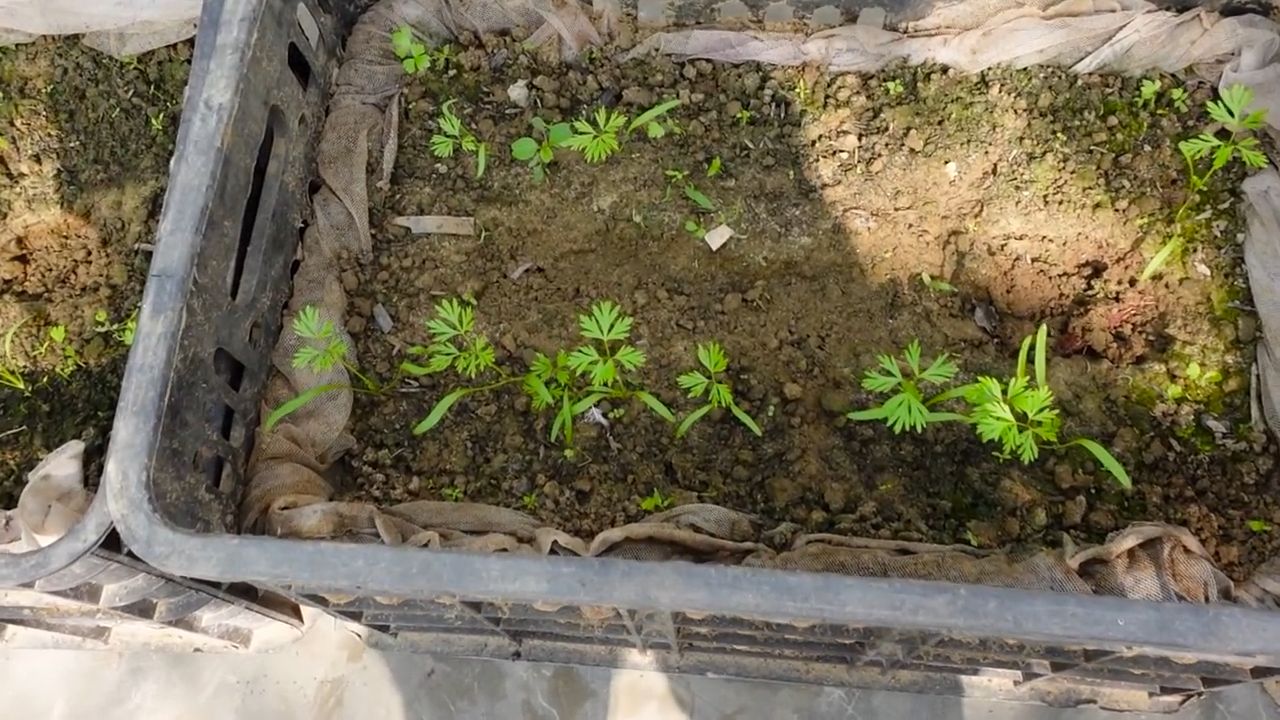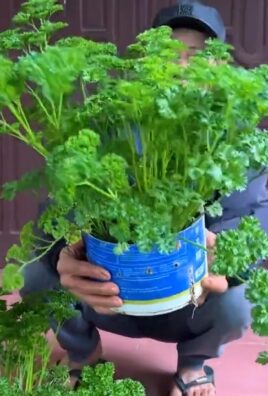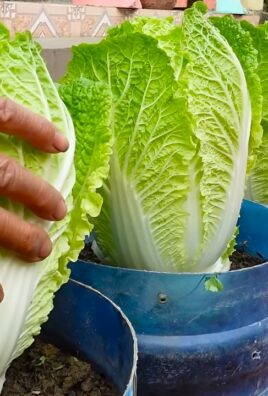Grow Purple Carrots at Home and unlock a vibrant splash of color in your garden and on your plate! Forget the ordinary orange – we’re diving into the fascinating world of purple carrots, a root vegetable with a history as rich and deep as its hue. Did you know that purple carrots aren’t some modern, genetically modified marvel? They’re actually the *original* carrots! Originating in the Middle East and Asia centuries ago, these colorful veggies were the dominant variety before the orange carrot we know today was popularized in the Netherlands in the 17th century.
But why should you bother with purple carrots? Well, beyond their stunning visual appeal, they’re packed with antioxidants, offering a nutritional boost that makes them a fantastic addition to your diet. Plus, growing your own food is incredibly rewarding! Imagine the satisfaction of pulling these beauties straight from your garden, knowing you nurtured them from seed to harvest. This DIY guide will walk you through every step, from choosing the right seeds and preparing your soil to harvesting your very own crop of delicious, grow purple carrots at home.
I know what you’re thinking: “Gardening seems complicated!” But trust me, it doesn’t have to be. This article is designed for beginners, providing simple, easy-to-follow instructions and helpful tips to ensure your success. So, grab your gardening gloves, and let’s get started on this colorful adventure!

Grow Your Own Purple Carrots: A Colorful DIY Garden Project 🌈🥕
Hello, garden friends! Want to add a splash of color to your vegetable patch? Let’s grow purple carrots together! They’re easier than you think, and the result isn’t just beautiful—it’s also super tasty and healthy. Here’s how to do it step by step.
What You’ll Need to Grow Purple Carrots
- Carrot seeds (purple variety): Choose high-quality seeds. Popular types include Purple Haze, Purple Dragon, or Deep Purple.
- Garden tools: Spade, rake, maybe a hand trowel.
- Good garden soil: Carrots thrive in loose, well-drained soil.
- Compost or organic fertilizer: To enrich the soil.
- Watering can or hose: For consistent watering.
- Labels and marker: To keep track of sowing dates and varieties.
- (Optional) Sand: To lighten heavy clay soils.
- (Optional) Fleece/row cover: To protect against pests and cold.
Soil Preparation: The Key to Healthy Carrots
Carrots can be a little picky when it comes to soil. They like it loose and free of stones so the roots can grow straight.
- Loosen the soil: Dig deeply with a spade, breaking up lower layers too.
- Remove stones and clumps: Roots will fork if they hit obstacles.
- Improve texture: Mix in sand and compost if your soil is heavy. Sand improves drainage, compost adds nutrients.
- Work in compost: Spread 2–3 cm of compost and rake it lightly in.
- Level the surface: Use a rake to smooth the soil into a fine, crumbly texture.
Sowing Purple Carrots: Step by Step
The right timing is crucial. You can sow purple carrots from April to July (check your seed packet for variety-specific info).
- Make seed rows: Draw rows 1–2 cm deep, spaced 20–30 cm apart.
- Sow thinly: Carrot seeds are tiny! Scatter lightly so you don’t have to thin too much later.
- Cover seeds: Gently cover with soil and press down lightly.
- Water gently: Use a watering can with a rose head or hose with a spray nozzle. Avoid washing seeds away.
- Label rows: Mark with seed type and sowing date for easy tracking.
Caring for Purple Carrots
- Watering: Keep soil evenly moist, especially during germination and dry spells. Avoid waterlogging.
- Weeding: Remove weeds regularly—they compete for light and nutrients.
- Thinning: When seedlings are 2–3 cm tall, thin them to 4–5 cm apart. Use the pulled seedlings in salads!
- Feeding: If needed, apply organic fertilizer sparingly. Too much nitrogen = leafy tops, small roots.
- Pest protection: Purple carrots are still prone to the carrot fly. Use fleece for protection.
Protecting Against Carrot Fly
Carrot flies are a common pest—their larvae tunnel into roots. Here’s how to keep them away:
- Fleece cover: Fine mesh over the bed keeps flies out.
- Companion planting: Grow carrots near onions or garlic—the smell deters carrot flies.
- Early sowing: Plant in April/May to get a head start before the flies peak.
- Regular checks: Remove any plants showing signs of damage.
Harvesting Purple Carrots
Harvest time depends on variety and sowing date, usually July to October.
- Check maturity: Pull one carrot gently to see if it’s the right size.
- Harvest carefully: Loosen soil with a hand fork if needed, then pull carrots gently.
- Clean: Brush off soil and cut off the greens.
- Store: Keep cool and dark. Packed in damp sand, carrots last even longer.
Using Purple Carrots in the Kitchen
Purple carrots are a showstopper on the plate and versatile in the kitchen:
- Raw: Crunchy, slightly sweet—perfect in salads or as snacks.
- Cooked: Keep their color and make a great side dish.
- Juice: Packed with antioxidants, fresh and refreshing.
- Chips: Slice thin, bake or fry into healthy carrot chips.
Why Purple Carrots Are So Healthy
The deep purple color comes from anthocyanins, natural plant compounds also found in blueberries, red cabbage, and eggplant. They’re powerful antioxidants that help fight free radicals. Purple carrots are also rich in:
- Vitamin A
- Vitamin C
- Potassium
- Fiber
Extra Tips for Success
Do a soil test if possible, to fine-tune pH and nutrients.
Choose a sunny spot for best growth.
Practice crop rotation—don’t grow carrots in the same spot every year.

Conclusion
So, there you have it! Growing your own vibrant, purple carrots at home is not only achievable but also a deeply rewarding experience. Forget the limited selection at the grocery store; imagine the satisfaction of harvesting a rainbow of colors, starting with these stunning purple beauties, straight from your own garden. This DIY trick isn’t just about saving money (though that’s a definite perk!); it’s about connecting with your food, understanding its origins, and adding a touch of magic to your meals.
Why is this a must-try? Because it’s easier than you think! With a little planning and the right conditions, you can cultivate these antioxidant-rich wonders in your backyard, on your balcony, or even in containers on your patio. The flavor profile of purple carrots is often described as slightly sweeter and earthier than their orange counterparts, adding a unique dimension to your culinary creations. Think vibrant salads, colorful crudités platters, or even a show-stopping purple carrot cake!
Beyond the basic method we’ve outlined, feel free to experiment! Try different varieties of purple carrot seeds to discover your favorite flavor and color intensity. Consider companion planting with herbs like rosemary or sage, which can help deter pests and enhance the carrots’ flavor. You can also adjust the soil composition to influence the size and shape of your carrots. For example, looser soil will encourage longer, straighter carrots, while denser soil might result in shorter, more compact roots.
Don’t be afraid to get your hands dirty and embrace the learning process. Gardening is all about trial and error, and even if your first attempt isn’t perfect, you’ll gain valuable knowledge and experience that will help you succeed in the future. The key is to start small, be patient, and enjoy the journey.
We are confident that you’ll find growing purple carrots at home to be a delightful and fulfilling endeavor. The vibrant color, unique flavor, and health benefits make them a truly special addition to any garden and kitchen. So, grab your seeds, prepare your soil, and get ready to witness the magic of nature unfold before your eyes.
We encourage you to try this DIY trick and share your experiences with us! Post photos of your purple carrot harvest on social media using [Your Hashtag Here] and let us know what delicious dishes you’ve created. We can’t wait to see your purple carrot creations! Let’s spread the word about the joy of growing your own food and inspire others to embrace the beauty and bounty of nature. Happy gardening!
Frequently Asked Questions (FAQ)
What are the benefits of growing purple carrots compared to orange carrots?
Purple carrots offer several advantages over their orange counterparts. Firstly, they are packed with anthocyanins, powerful antioxidants that are responsible for their vibrant color. These antioxidants have been linked to various health benefits, including improved heart health, reduced risk of certain cancers, and enhanced cognitive function. Secondly, purple carrots often have a slightly sweeter and earthier flavor than orange carrots, adding a unique dimension to your culinary creations. Finally, growing purple carrots adds visual appeal to your garden and your plate, making them a fun and exciting addition to your home-grown produce.
What kind of soil is best for growing purple carrots?
Purple carrots, like all carrots, thrive in well-drained, loose soil that is rich in organic matter. Avoid heavy clay soils, as they can restrict root growth and result in misshapen carrots. Amend your soil with compost or well-rotted manure to improve drainage and fertility. The ideal soil pH for carrots is between 6.0 and 6.8. Before planting, remove any rocks or debris from the soil, as these can also hinder root development. A raised bed or container filled with a suitable potting mix is also an excellent option for growing purple carrots, especially if your native soil is less than ideal.
How much sunlight do purple carrots need?
Purple carrots require at least six hours of direct sunlight per day to thrive. Choose a sunny location in your garden or on your balcony where your carrots will receive ample sunlight throughout the growing season. If you live in a particularly hot climate, providing some afternoon shade can help prevent the carrots from bolting (going to seed prematurely).
How often should I water my purple carrots?
Consistent watering is crucial for successful carrot cultivation. Keep the soil consistently moist, but not waterlogged. Water deeply whenever the top inch of soil feels dry to the touch. Avoid overhead watering, as this can promote fungal diseases. Drip irrigation or soaker hoses are excellent options for providing consistent moisture directly to the roots. During hot, dry weather, you may need to water your carrots more frequently.
When is the best time to harvest purple carrots?
Purple carrots are typically ready to harvest 70-80 days after planting. You can start harvesting them when they reach a size that is suitable for your needs. Gently loosen the soil around the carrots and pull them up by the greens. If the soil is dry, water it thoroughly before harvesting to make it easier to pull the carrots. You can also use a garden fork to carefully lift the carrots from the ground.
Can I grow purple carrots in containers?
Yes, you can absolutely grow purple carrots in containers! Choose a container that is at least 12 inches deep and wide to accommodate the carrot roots. Fill the container with a well-draining potting mix and follow the same planting and care instructions as you would for growing carrots in the ground. Container-grown carrots may require more frequent watering and fertilization than those grown in the ground.
What are some common pests and diseases that affect purple carrots?
Some common pests that can affect purple carrots include carrot rust flies, aphids, and nematodes. Diseases that can affect carrots include leaf blight and root rot. To prevent pest and disease problems, practice good garden hygiene, such as removing weeds and debris from the garden. You can also use organic pest control methods, such as insecticidal soap or neem oil, to control pests. Ensure proper soil drainage to prevent root rot.
How do I store purple carrots after harvesting?
After harvesting, remove the greens from the carrots, leaving about an inch of stem attached. Gently brush off any excess soil. Store the carrots in a cool, dark, and humid place, such as a refrigerator or root cellar. You can wrap the carrots in a damp paper towel or store them in a plastic bag to help maintain their moisture. Properly stored carrots can last for several weeks or even months.
Can I save seeds from my purple carrots?
Saving seeds from carrots is a bit more involved than saving seeds from some other vegetables. Carrots are biennials, meaning they typically don’t produce seeds until their second year of growth. To save seeds, you’ll need to overwinter your carrots in the ground or in a cool, protected location. In the spring, the carrots will flower and produce seeds. Allow the seed heads to dry completely on the plant before harvesting them.
What are some creative ways to use purple carrots in cooking?
Purple carrots can be used in a variety of culinary applications. They can be eaten raw in salads or as part of a crudités platter. They can also be roasted, steamed, or sautéed as a side dish. Purple carrots add a beautiful color and unique flavor to soups, stews, and stir-fries. You can even use them to make purple carrot juice or purple carrot cake. The possibilities are endless!





Leave a Comment